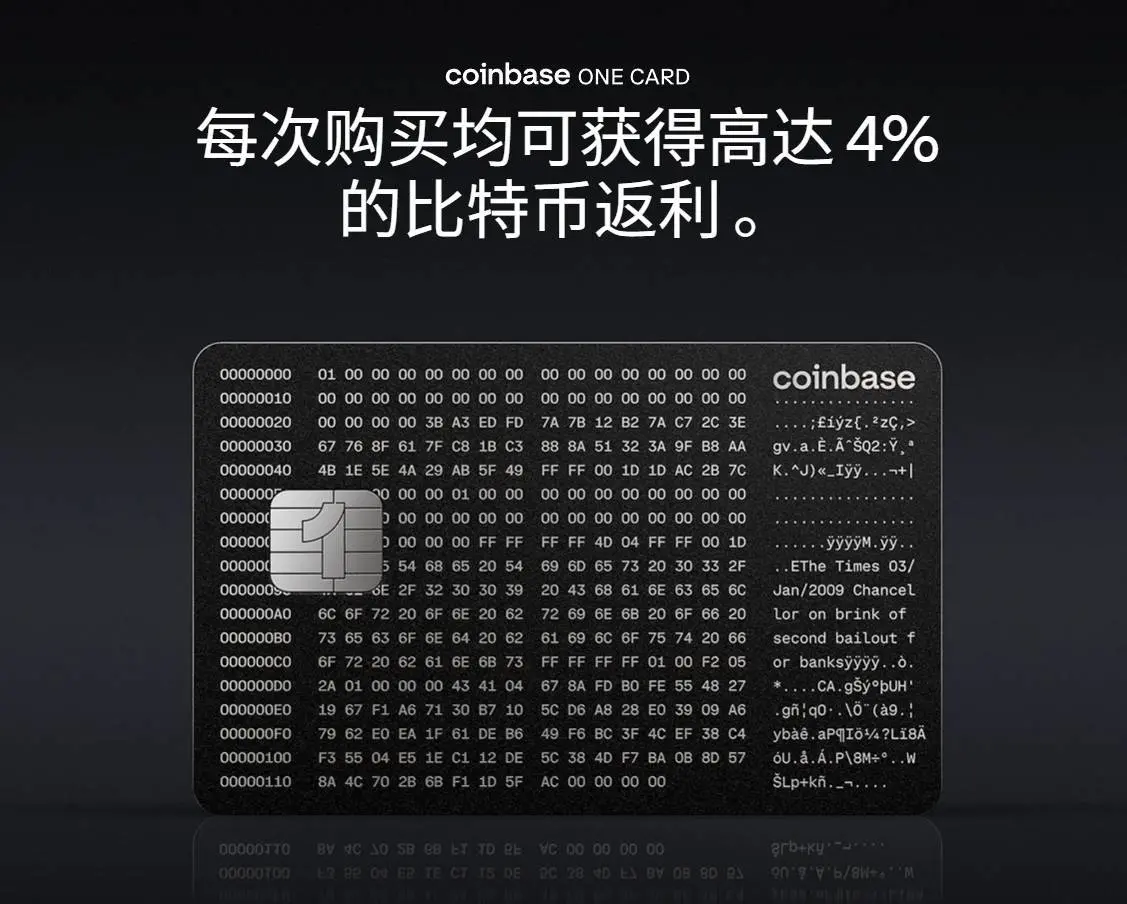Encrypted U card is defeated and refunded

転載元: chaincatcher
06/18/2025·6DAuthor: Shenchao TechFlow
The once popular crypto payment card (U card) business is now facing shrinkage.
On June 17, Infini Princess Christine posted on X, announcing the suspension of consumer-oriented encryption U-card business, and also elaborated on the reasons behind it:
Compliance costs are high, profits are small, and operational burden is heavy.

She admitted that the to C card business takes up 99% of the company's time and costs, but has almost no revenue contribution. This announcement also marks Infini's strategic retreat from to C card business and focuses on financial management and B-side services.
But 1-2 years ago, U cards were regarded as a breakthrough innovation in the combination of cryptocurrencies and traditional finance.
By supporting direct consumption of stablecoins such as USDT and USDC, U cards quickly attracted users in the crypto circle; at that time, ChatGPT was just emerging, and many people wanted to experience subscription services, but due to the lack of overseas bank cards to pay, U cards have also become a new payment channel in this AI craze.
Withdrawal and ChatGPT, the former represents the crypto circle's desire for channel security, while the latter activates new payment scenarios.
From the current perspective, with the development of the industry, neither of these two needs seems to have a U card in a critical way. As more U-card projects fall one after another, the difficulty of this business becomes increasingly obvious.
Not an isolated case
Infini's exit is not an isolated incident.
There are many examples where we can obtain partial or complete shutdown of U card services from public information, and the more typical ones are:
-
In September 2024, OneKey announced the suspension of new registration and recharge functions, and officially disables its U card service on January 31, 2025. Although the official did not specify the reasons in detail, the industry speculated that it was related to the interruption or compliance pressure of upstream payment service providers;
-
In December 2023, Binance terminated its card services in the European Economic Area and ended its cooperation in parts of Latin America and the Middle East in August 2023. This adjustment is considered a response to the tightening of regional regulation;
-
Dating back to 2018, Visa, one of the world's largest payment networks, terminated its partnership with WaveCrest due to compliance issues. The latter is a middleman that provides card issuance and payment processing for crypto payment cards, and is responsible for connecting the U card to the Visa network. Visa's sudden exit directly caused WaveCrest to continue serving its customers, including U-card providers such as Bitwala and Cryptopay.
These cases together point to the fact that the U card business has systemic dilemma on a global scale.
Out of control and high costs upstream
From the perspective of ordinary users, U cards are a very simple product--what you see is what you get, and it is ready to use; what needs to be weighed and compared are nothing more than rates and wear.
But from the perspective of making U cards, the root of the problem lies in its complex upstream and downstream logic and high cost pressure.
First of all, the operation of U cards depends on multi-party collaboration: users recharge stablecoins such as USDT, card providers (such as Infini) convert funds into fiat currencies through off-ramp, and payment networks (such as Visa and Mastercard) complete settlement with card issuing institutions and banks.
However, the upstream links—especially payment networks and banks—are not under the control of the crypto circle. This makes U Card a "vassal" of the traditional financial system, with weak bargaining power.
But why do you see so many U cards from different brands?
The exchange issuing cards, the wallet issuing cards, and the payment entrepreneurial team issuing cards... Can anyone issue an encrypted payment card?
When a user sees a card with a certain cryptocurrency exchange brand and holding the VISA logo, what is unknown behind it is actually the cooperation model between the issuer and the technology provider.
For example, Coinbase’s VISA card was previously supported by technology provider Marqeta, which enables it to issue encrypted debit cards and provide users with real-time transaction authorization and fund conversion services;
Furthermore, due to the existence of the role of "technology provider", the issuance process of crypto payment cards has become relatively simple.

Technology providers provide a capability similar to " card issuance as a service" : by providing the necessary security technologies, payment processing systems and user interfaces to organizations that need to issue cards to support crypto card issuance, currency conversion and payment.
The card issuer only needs to call the technology provider's API or SaaS solution to issue and manage encrypted credit/debit cards.
At the same time, the technology provider's "Card Issuance as a Service" also includes a variety of functions including transaction authorization, fund conversion, transaction monitoring and risk management, to help the issuer simplify operations and improve efficiency.
(For a clearer explanation, please refer to previous articles: " Striving to issue cards, the business behind encrypted payment cards " )
In other words, the U card you have is actually the result of cooperation between the card issuer, the technology provider, the bank and the payment network.
At the same time, this also means that every party on the hairpin chain has a profitable demand. Everyone wants to get a share of the pie, but the card issuing projects and brands that stand in the entire chain are obviously not much of the benefits they can get from it.
The revenue from U cards mainly comes from transaction fees, but payment for 1-3% fees charged by the Internet, the additional cost of stablecoin conversion, and bank account maintenance fees will quickly swallow the profits of this business.
Income is difficult to offset costs, but what is even more troublesome is that fixed costs cannot be cut.
Supporting the operation of U cards is not easy. Technical maintenance requires real-time transaction processing and security, while customer support needs to deal with refunds and consulting needs - such as Infini's promised 10-day refund arrangement, and the human support and response behind this must also be calculated.
On the user side, individuals may encounter problems due to various payment scenarios, but the project parties of U card business must deal with these personalized problems; and because the upstream chain is too long, when there are problems with the technology provider or card organization, they are often in a state of being caught in the fire.
Compliance risks
In addition, U-card survival also faces strict compliance requirements. KYC and AML (anti-money laundering) are the basic thresholds, and if you do business in North America and Europe, the US FinCEN registration and EU MiCA regulations will be further strengthened.
USDT itself is one of the favorite assets of gray industries (such as money laundering and running scores), which naturally determines that U cards need to spend more energy to deal with risk control issues.
More radically, when companies in the U card business operate in the model of "registering overseas and employees working in China", due to the particularity of the encryption industry in China, the business is more likely to face certain legal risks.

Recently, there have been news that some U-card services have been shut down on social media. We cannot know the authenticity and specific details of the incident itself, but one thing is certain:
The efforts required by U-card business to comply with local regulations and the risks brought by other factors are much higher than those on-chain businesses. Sometimes it is not necessarily a problem with the card itself. The funds involved in the card, the people used and the relatively tight public opinion environment may cast a shadow on the brand and perception of the U card business.
Thankless and worrying about not making money, this may be the common dilemma faced by most U-card projects focusing on the payment field.
The current U card business may be more suitable for CEX. CEX does not rely on U cards to generate profits and revenue. When the transaction business can generate sufficient profits, it is a better choice to manage customer loyalty through U cards and treat it as a brand differentiated service.
For example, Bybit and Bitget still have corresponding U cards, and Coinbase recently said at the State of Crypto Summit that the Coinbase One Card will be launched in the fall of 2025, and users can return up to 4% of Bitcoin per purchase, and the cards are supported by American Express Network.

Everyone wants to send cards, but whoever can make them in the end will test more compliance resources and risk control capabilities. Judging from the current situation, the U Card business has gradually become oligopolisized.
From vassal to independence
On the one hand, cryptocurrency is blocked from doing traditional business, and on the other hand, traditional finance continues to do business related to the currency circle.
Whether it is stablecoins, RWA or the recently popular crypto asset reserves of listed US stocks, traditional finance is making profits by relying on the accumulation of existing resources and compliance;
In addition to encrypting native businesses that revolve around transactions and chain-making assets, the currency circle business has become increasingly restrained.
The dilemma of the U card business actually reflects the embarrassing situation of the entire crypto industry when interacting with the traditional financial system. As a "vassal" of traditional finance, the crypto industry has never been able to take the initiative in the payment field.
Perhaps reducing the dependence on fiat currency conversion, directly initiate transactions from the wallet, conducting transactions through on-chain settlement, and bypassing traditional payment networks to transfer money, is the original form of encryption technology, but under the premise of compliance and embracing reality, this path seems too ideal.
If you try to master the industrial chain because you are restricted by others in doing traditional business, such as acquiring banks, payment channels and technology providers, this may further push up the cost of the business, especially when you don’t know how many users will use the card.
Going further, let’s look at the contradictions reflected in the U card business, not only in the payment field, but also in the extended development of the entire encryption industry.
When innovation and popularity can only continue in the soil of crypto-native soil, grassroots and independent opportunities for crypto-growing are still not here.

 jinse
jinse

